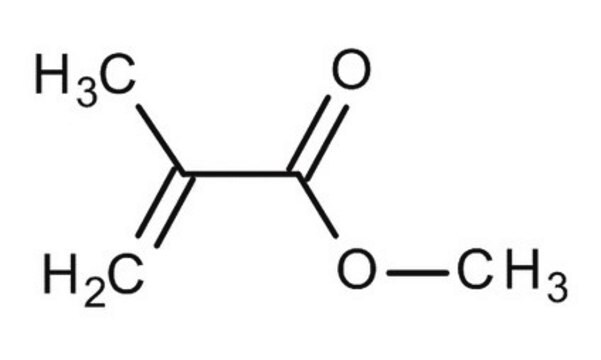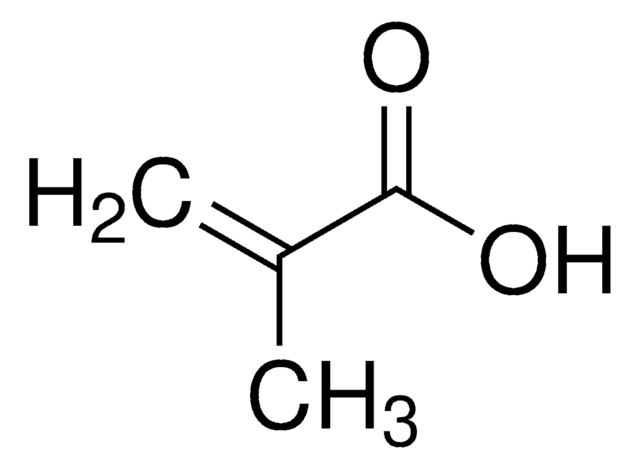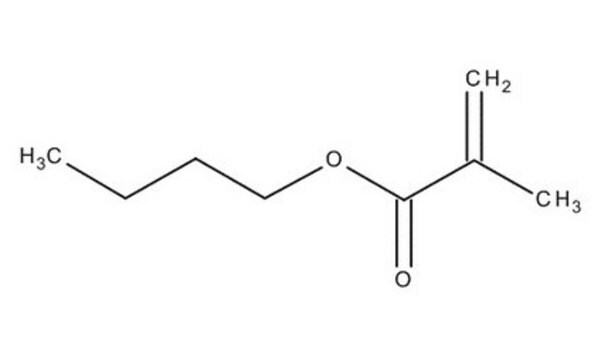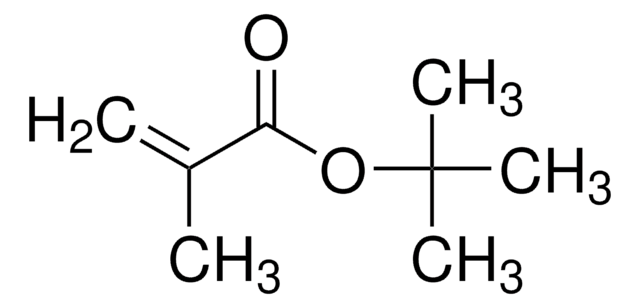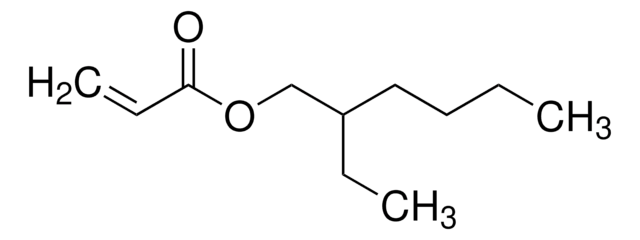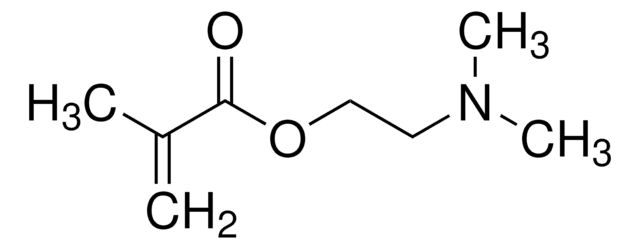235865
Butyl methacrylate
99%, contains monomethyl ether hydroquinone as inhibitor
About This Item
Recommended Products
vapor density
4.91 (15 °C, vs air)
Quality Level
vapor pressure
2 mmHg ( 20 °C)
assay
99%
form
liquid
autoignition temp.
562 °F
contains
monomethyl ether hydroquinone as inhibitor
expl. lim.
2-8 %
refractive index
n20/D 1.423 (lit.)
bp
162-165 °C (lit.)
density
0.894 g/mL at 25 °C (lit.)
storage temp.
2-8°C
SMILES string
CCCCOC(=O)C(C)=C
InChI
1S/C8H14O2/c1-4-5-6-10-8(9)7(2)3/h2,4-6H2,1,3H3
InChI key
SOGAXMICEFXMKE-UHFFFAOYSA-N
Looking for similar products? Visit Product Comparison Guide
General description
Application
- A Monomer to synthesize waterborne butyl methacrylate (co)polymers latexes via emulsion polymerization for the development of coating materials for slow release-fertilizers.
- A matrix polymer in the preparation of LDH/poly (butyl methacrylate) nanocomposites, which can improve the mechanical properties and thermal stability of the resulting nanocomposites.
- A monomer to synthesize styrene and butyl methacrylate copolymers for use in leather finishing. Increasing the BMA content of the copolymer increases the water resistance and decreases the water vapor permeability of the leather.
- A monomer for the preparation of monolithic columns on microfluidic chips. These columns can be used for a wide range of applications, such as the separation and analysis of complex mixtures of compounds, the preconcentration of samples, and the development of new microfluidic analytical devices.
signalword
Warning
hcodes
Hazard Classifications
Eye Irrit. 2 - Flam. Liq. 3 - Skin Irrit. 2 - Skin Sens. 1 - STOT SE 3
target_organs
Respiratory system
Storage Class
3 - Flammable liquids
wgk_germany
WGK 1
flash_point_f
119.3 °F - closed cup
flash_point_c
48.5 °C - closed cup
ppe
Eyeshields, Faceshields, Gloves, type ABEK (EN14387) respirator filter
Choose from one of the most recent versions:
Already Own This Product?
Find documentation for the products that you have recently purchased in the Document Library.
Customers Also Viewed
Articles
Tissue engineering has become a key therapeutic tool in the treatment of damaged or diseased organs and tissues, such as blood vessels and urinary bladders.
Our team of scientists has experience in all areas of research including Life Science, Material Science, Chemical Synthesis, Chromatography, Analytical and many others.
Contact Technical Service

